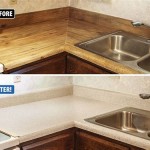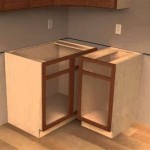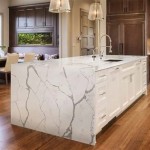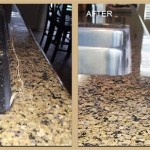How To Measure Countertops For Replacement
Replacing countertops is a significant home improvement project that can dramatically enhance the aesthetic appeal and functionality of a kitchen or bathroom. However, accurate measurement is paramount to ensure a proper fit and avoid costly mistakes. This article provides a comprehensive guide on how to measure countertops for replacement, covering essential tools, techniques, and considerations.
Before embarking on the measurement process, it is crucial to gather the necessary tools. These include a measuring tape (preferably a steel one for accuracy), a pencil, graph paper or a digital measuring tool, a straight edge (such as a level or ruler), and potentially a laser measuring device for complex layouts. Safety glasses are also recommended to protect the eyes from dust or debris.
It's important to accurately represent the entire countertop area. This usually involves creating a detailed diagram of the existing countertops, noting the location of all walls, appliances, sinks, and any other fixed elements that the countertop will need to accommodate. This diagram will serve as the foundation for the measurement process.
Preparing for Measurement
Prior to taking any measurements, it is essential to prepare the area. This involves clearing the countertops of all items, including appliances, decorative objects, and small kitchen tools. This provides an unobstructed view of the countertop surface and edges. Additionally, it is advisable to clean the countertops to remove any dirt or debris that may interfere with accurate measurements. For complex layouts, consider removing any temporary obstructions that might hinder access to certain areas.
Consider the existing backsplash. If the backsplash is to be replaced along with the countertop, it should be included in the measurement process. The height and length of the backsplash should be noted separately to ensure accurate replication and installation.
When preparing, determine the desired overhang. The overhang is the portion of the countertop that extends beyond the edge of the cabinets. Standard overhangs are typically 1 to 1.5 inches, but this can vary depending on personal preference and the style of the kitchen or bathroom. The overhang measurement needs to be factored into the overall countertop dimensions.
It is also important to inspect the existing cabinets for any signs of damage or instability. Countertops rely on the cabinets for support, so it is essential to ensure that the cabinets are level and in good condition. Any necessary repairs or reinforcements should be completed before installing the new countertops.
Taking Accurate Measurements
The core of the process involves obtaining precise measurements of the countertop's length, width, and thickness. Start by measuring the length of each countertop section. Extend the measuring tape along the longest straight section, ensuring it follows the contour of the wall. Record the measurement to the nearest eighth of an inch. Repeat this process for each section of the countertop.
Next, measure the width of the countertop at multiple points. Countertops are not always perfectly uniform, so taking several measurements at different locations will help to identify any variations. Record the widest measurement and the narrowest measurement. Also, measure the depth of the countertop from the front edge to the wall. Again, take several measurements to account for any irregularities.
The thickness of the countertop is a critical measurement that determines the overall profile and structural integrity. Use a measuring tape or calipers to measure the thickness of the existing countertop at several points along the edge. Note any variations in thickness. This measurement is important for ensuring that the new countertop matches the existing specifications.
For countertops with curves or angles, additional care is required. To measure a curved edge, use a flexible measuring tape or string to trace the curve. Then, measure the length of the string. Alternatively, use a series of straight-line measurements to approximate the curve. For angled corners, use a protractor to measure the angle. Record the angle and the length of each side of the corner.
Accurately documenting these measurements is crutial. Transfer all measurements to the diagram created earlier, noting the length, width, thickness, and any curves or angles. Label each section of the countertop clearly. Double-check all measurements to ensure accuracy. It is helpful to have a second person verify the measurements to reduce the risk of errors.
Accounting for Obstructions and Cutouts
Countertops often need to accommodate sinks, cooktops, faucets, and other fixtures. Therefore, it is essential to accurately measure and record the dimensions and locations of these cutouts. For sinks, measure the length and width of the sink basin, as well as the distance from the edge of the sink to the front and back of the countertop. Also, note the type of sink (e.g., undermount, drop-in, farmhouse) as this will affect the cutout dimensions.
For cooktops, measure the length and width of the cooktop opening, as well as the distance from the edge of the cooktop to the front and back of the countertop. Also, note the type of cooktop (e.g., gas, electric, induction) as this will affect the cutout dimensions and any required ventilation.
For faucets, measure the diameter of the faucet holes and the distance between the holes. Also, note the type of faucet (e.g., single-hole, two-hole, three-hole) as this will affect the location and size of the holes. For other fixtures, such as soap dispensers or air gaps, measure the diameter of the holes and their location relative to the sink or other fixtures.
Consider any electrical outlets or other utilities that need to be accommodated. Measure the distance from the edge of the countertop to the center of the outlet or utility box. Also, note the height of the outlet or utility box above the countertop surface. This information is important for ensuring that the new countertop does not interfere with the operation of these utilities.
When documenting these measurements, be as precise as possible. Use a ruler or calipers to measure the dimensions of the cutouts to the nearest sixteenth of an inch. Indicate the location of the cutouts on the diagram created earlier, using clear and concise labels. Double-check all measurements to ensure accuracy.
Special Considerations
When measuring countertops, several special considerations may arise depending on the layout and design of the kitchen or bathroom. For instance, when dealing with an island countertop, it is important to consider any overhangs or seating areas. Measure the length and width of the island countertop, as well as the dimensions of any overhangs. Also, note the location of any support brackets or corbels that may be required to support the overhang.
For countertops that wrap around corners or extend into adjacent rooms, it is crucial to ensure that the measurements are accurate and consistent. Use a laser measuring device or straight edge to verify that the corners are square or at the desired angle. Also, consider the transition between the countertop and any adjacent surfaces, such as walls or cabinets. Ensure that the countertop will fit seamlessly into the existing space.
If the existing countertops are damaged or uneven, it may be necessary to make adjustments to the measurements. For example, if the countertop is warped or cracked, take measurements at multiple points and average the results. Alternatively, use a straight edge to create a level surface and then measure from the level surface to the wall or cabinets. It is important to communicate any discrepancies or irregularities to the countertop fabricator to ensure that the new countertops fit properly.
When measuring for a undermount sink it's important to provide the sink specifications to the fabricator. The fabricator will need this to ensure the correct size and reveal for the undermount sink.
For some situations, a template may be required. A template is a physical representation of the countertop that is created using cardboard, plywood, or other materials. A template can be particularly useful for complex layouts or countertops with curved edges or irregular shapes. The template is placed on the existing cabinets or walls and traced to create a precise outline of the countertop. The template is then sent to the countertop fabricator to be used as a guide for cutting and shaping the new countertops.
Lastly, remember that it’s always a good idea to consult with a professional countertop installer or fabricator. They can review your measurements, provide guidance on material selection, and ensure that the new countertops are installed correctly.

How To Measure Countertops And Get It Right The First Time Around

How To Measure Countertops For Replacement

How To Measure Countertops For Replacement Caesarstone Us

How Can I Measure My Countertops 3 Easy Steps Marble Com

Tips On Measuring Your Kitchen Countertops For An Accurate Quote

4 Ways To Measure Countertops Wikihow

4 Ways To Measure Countertops Wikihow

How To Measure Square Footage Of Your Countertop Stoneland Granite Quartz Missouri Kentucky Tennessee

Budget Friendly Kitchen Countertop Replacement Guide Co Lab Lending

How To Measure Countertops Tools Needed Hh Ross
See Also








